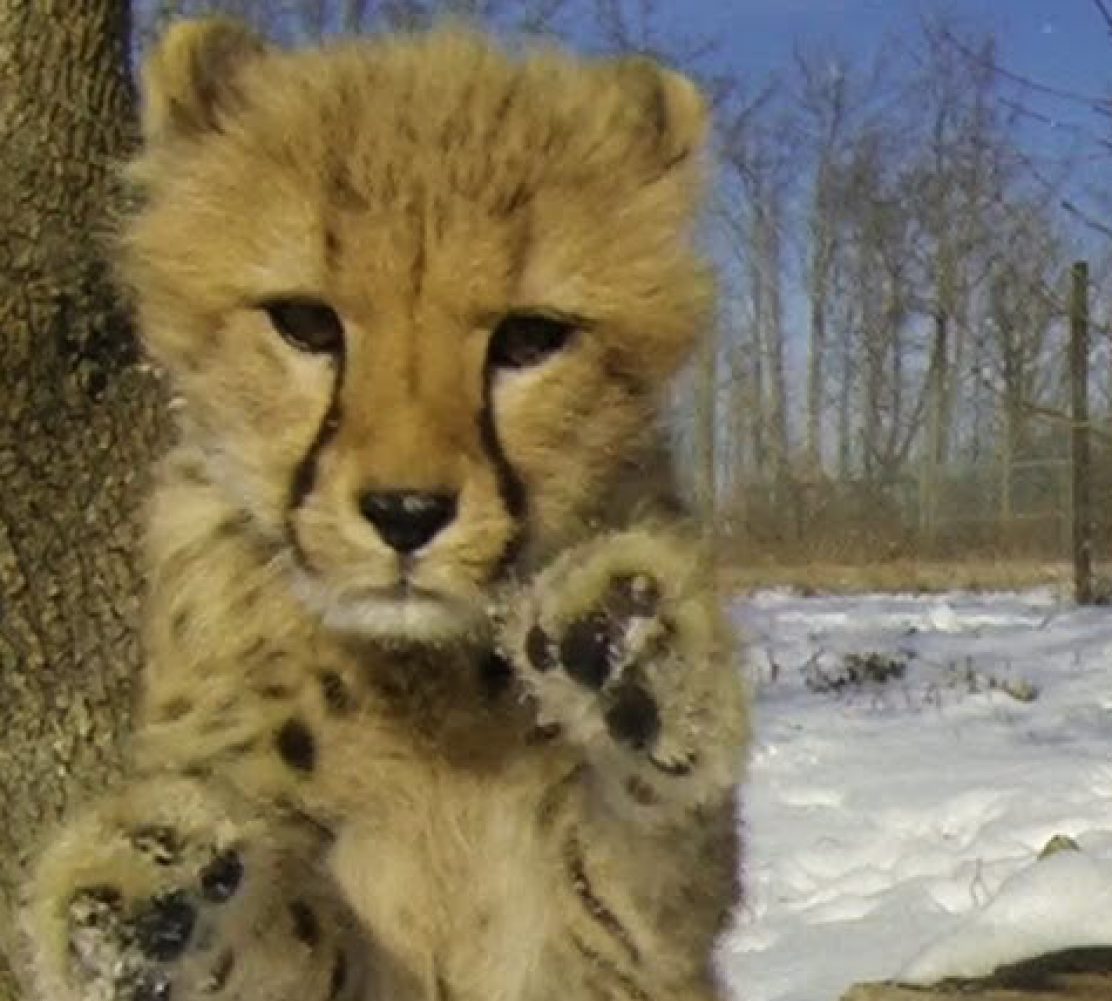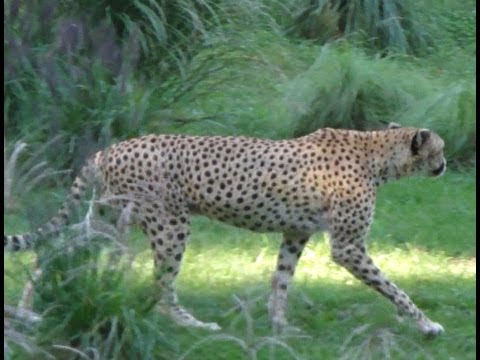National Zoo Webcams
A part of the Smithsonian Institution and one of the oldest zoos in the United States, the National Zoological Park often referred to as the National Zoo houses 1,800 animals and over 300 species 30 to 40 of which are classified as endangered species. Some of the more popularly known species on exhibit include the giant pandas, species of Asian elephants, aquatic animals, amphibians, birds, big cats, great apes, and several other small mammals.
Facts about the National Zoological Park
- The National Zoological Park first began in 1886 as the National Museum’s Department of Living Animals to serve as a wildlife refuge for endangered animals such as the beaver and bison.
- For more than thirty years the National Zoological Park has been the home to a number of giant pandas. In 1972 Hsing Hsing and Ling Ling became the first resident giant pandas of the National Zoological Park followed by the male and female pandas Mei Xiang and Tian Tian in 2000. In 2005 Mei Xiang gave birth to Tai Shian who was later transferred to China in 2010. In 2013 Mei Xiang gave birth to a female panda cub named Bao Bao, who currently resides at the zoo and can be seen by way of the zoos’ PandaCam.
- One of the most famous animals to have spent much of its life a the zoo was a black bear cub rescued from a fire who later became known as Smokey Bear.
- In 2010 the Smithsonian established the National Zoo’s Conservation and Research Center in Front Royal, Virginia to act as part of an umbrella in its effort to conserve endangered species and educate future generations of conservationists. Today the facility consists of six centers namely, the Conservation Ecology Center, the Migratory Bird Center, the Center for Species Survival, the Center for Conservation and Evolutionary Genetics, the Center for Conservation Education and Sustainability and the Center for Wildlife Health and husbandry Sciences and is known as the Conservation Biology Institute.
The National Zoological Park Webcam Exhibits
The National Zoological Park Asia Trail Webcams
The zoo’s Asia Trail features a series of state-of-the-art exhibits housing seven Asian species such as the Asian small-clawed otters, cats, clouded leopards, a Japanese giant salamander, giant pandas.
The Asian small-clawed otter webcam
The Asian small-clawed otter otherwise known as the oriental small-clawed otter is the world’s smallest otter weighing in at less than 5 kg. The species which is known to frequent mangrove swamps, and freshwater wetlands of southern China, Indonesia, Bangladesh, Singapore, Malaysia, Laos, Thailand, Philippines, India, Vietnam, and Burma is distinctive by its claws not extending beyond its its partially webbed fingers and toes.
View The Asian small-clawed otter webcam.
The Clouded Leopards webcam
Commonly found in the Himalayan foothills of Southeast Asia into China, the clouded leopard due to its decreasing population trend was classified in 2008 by the International Union for Conservation of Nature as a vulnerable species suspected of having a total population of less than 10,000.
The clouded leopard though the smallest of the big cats is not closely related to the leopard. However the species is considered by many conservationists as the key to providing the evolutionary link between big and small cats.
The National Zoological Park Asia Trail features two resident clouded leopards which can be seen leaping from limbs and occasionally napping on the branches of trees.
View The Clouded Leopards webcam.
The Elephant Community Center webcam
One of the largest mammals of the family of Elephantidae the elephant is commonly found scattered throughout Southeast Asia, South Asia and across sub-Saharan Africa. Elephants are herbivorous mammals and though they prefer to stay close to water will habitat in different areas including deserts, forests, marshes, and savannas.
The National Zoological Park elephant exhibit features six female and one male elephant. Visit the zoo’s elephant exhibit by clicking the link below and watch the heard of elephants roaming the elephant community center.
View Elephant Community Center webcam.
The National Zoological Park Fishing Cats Webcam
Primarily found in South and Southeast Asia and in the Terai region of the Himalayan foothills, the fishing cat not to be confused with the fisher (animal) is a medium-sized short-tailed (twice the size of a domestic cat) wild cat known to habitat wetland areas. An excellent swimmer the fishing cat will hunt along the edges of watercourses and occasionally diving into the water to catch its prey. Though well adapted to its habitat the population of the fishing cat has severely declined throughout Asia over the last 10 years.
View The Fishing Cat webcam.
The National Zoological Park Lion Cub Webcam
One of the five big cats of the family of Felidae, the lion or African lion is the second-largest cat next to its closest relative the tiger. Lions can be mostly found in sub-Saharan Africa, and in Asia. Though not understood, lions which were once widespread throughout most of Africa, and from western Europe to India have experienced a major decline in population of as much as up to 50% over the past two decades. The species which is classified as a vulnerable species can live up to 14 years in the wild and as much as up to 20 years in captivity.
The National Zoological Park Lion Cub Webcam by way of its Lion Cub Webcam allows online viewers to watch its male and female resident lions by clicking on the link provided below.
View The Lion Cub Webcam.
The Naked Mole-Rat Webcam
Commonly referred to as the desert mole rat or sand puppy, the naked mole-rat is an underground rodent primarily found in East Africa. Its unique set of physical attributes which include a lack of pain sensation, low metabolic and respiratory rate makes the naked mole-rat well-adapted to its habitat and able to thrive in areas which are otherwise considered as harsh underground environment.
View Naked Mole-Rat Webcam.
The National Zoological Park Orangutan Webcam
Native to the rain forests of Borneo and Sumatra in the regions of Indonesia and Malaysia, the orangutan constitutes two extant species of Asian great apes. Characterized by their reddish-brown hair and distinctive cheek pads amongst males, the orangutan is the most arboreal of the great apes and is known for spending most of its time in trees.
The National Zoological Park is home to six orangutans which can be seen by way of the zoo’s orangutan webcam which shows these large Asian primates swinging in-between the Think Tank and the Great Ape House along a series of cables and towers known as the Orangutan Transport System.
View Orangutan Web cam.
The National Zoological Park Panda Webcam
Also known as the panda bear or just panda, the giant panda native to south central China is easily distinguishable by its large black patches around its eyes, over its ears and across its large rounded body. Although the giant panda is recognized a member of the order of Carnivora and will occasionally eat rodents, birds, fish and carrion, the giant panda’s diet mainly consists of bamboo.
The National Zoological Park is home to an adult male and female panda loaned from the China Wildlife Conservation Association. These giant pandas, Mei Xiang and Tian Tian are kept in a Giant Panda Habitat and can be viewed online both by way of two webcams, Panda Cam 1 and Panda Cam 2.
View The Giant Panda Webcam 1.
View The Giant Panda Webcam 2.
Zoo Camera Tags:
- national zoo webcam
- orangutan webcam
- national zoo webcams

